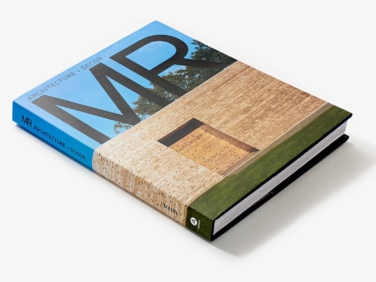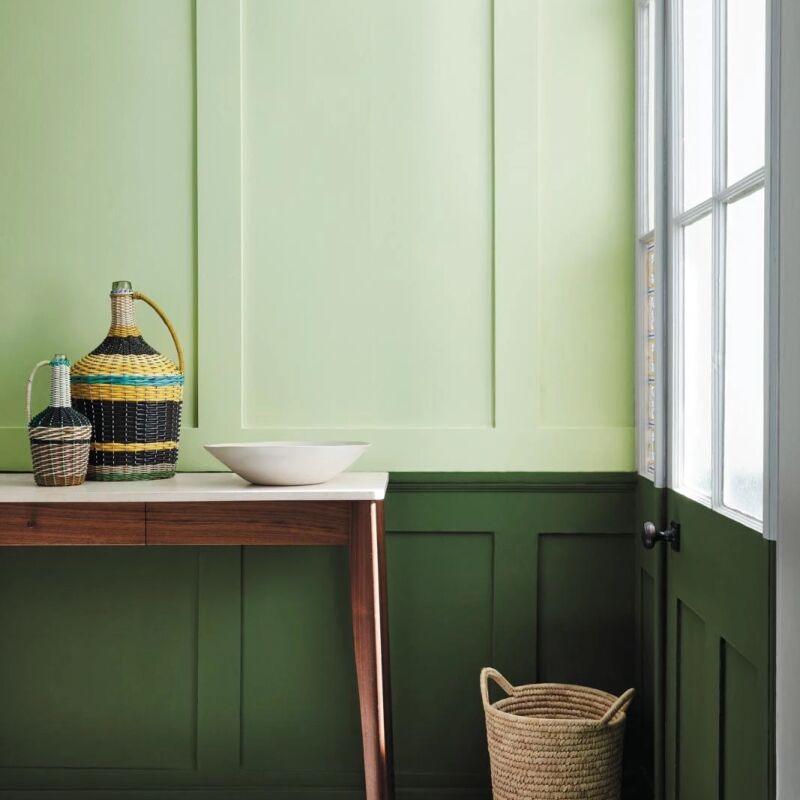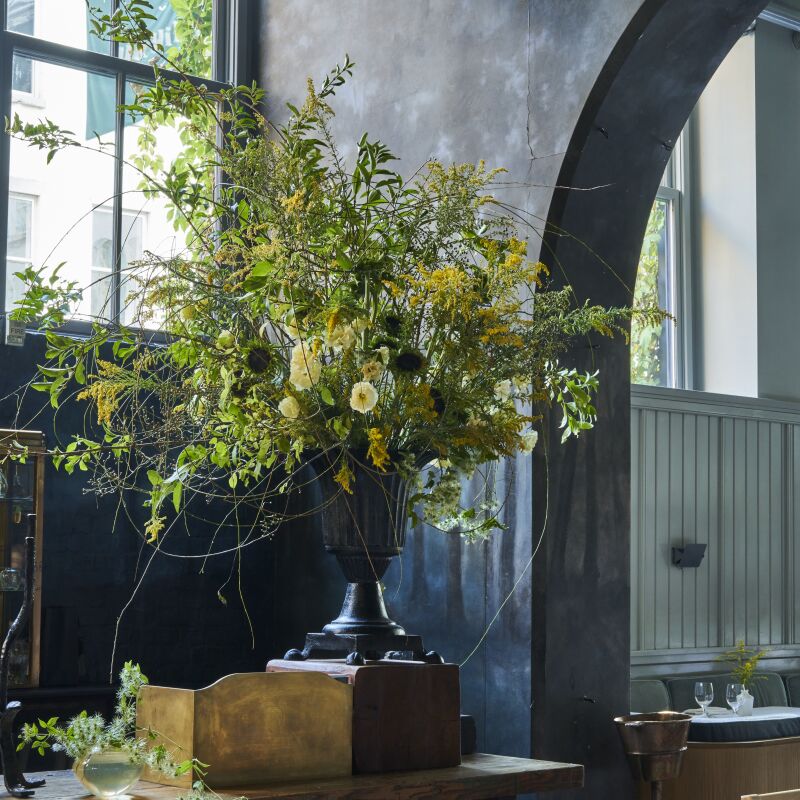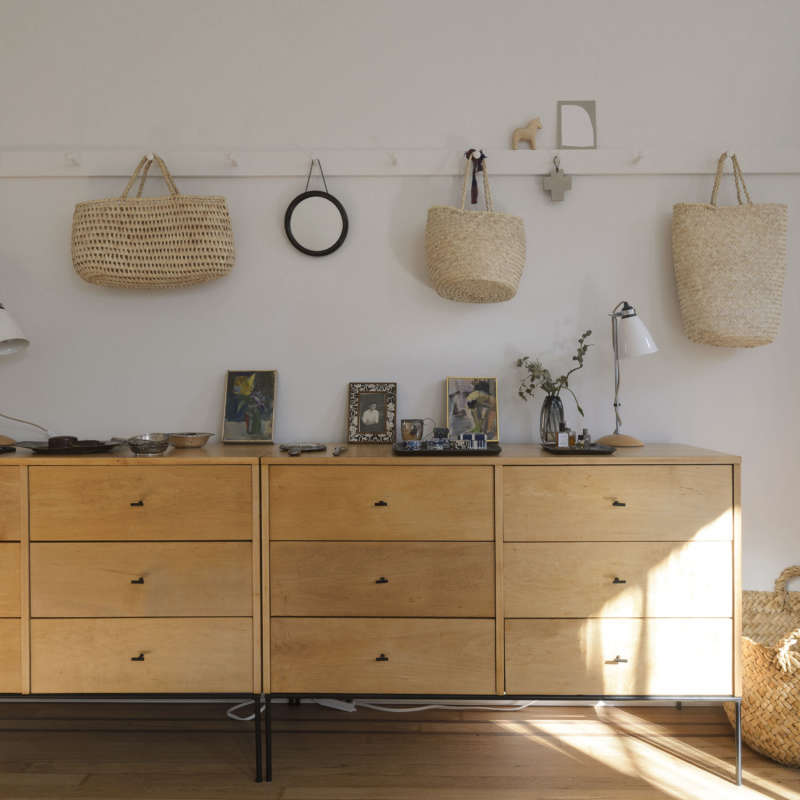An apt description of David Mann, the founder of MR Architecture + Decor in New York, might be “exacting.” He’s full of smart, highly specific ideas and so is his work, which borders on modern domestic poetry. For clients, Mann is a problem solver but never a dictator, and his own Federal-style house upstate has plenty of endearing quirks that reveal a softer side. We asked him to share his thoughts:
Remodelista: Your current favorite countertop material?
David Mann: Lately we’ve completed a few projects with white Quartzite countertops. I love the natural look and figuration of this very durable material. We have also done concrete counters. The last one we did was stained black, which worked beautifully with the black-stained ash cabinetry.
RM: So you’re a concrete fan. Favorite use?
DM: I love all things concrete—walls, floors, furniture, etc. We have done all of these things. My dream is to design an all-concrete house and make a concrete suit to wear when I’m there!

RM: Your go-to neutral paint color is?
DM: Ralph Lauren’s Pocket Watch White. It is no longer available, so now we have it color-matched. It’s warmer in tone than a pure bright white. It has hints of green, tan and yellow, which, when combined, give it depth, but to the casual viewer it still reads as white.
RM: Your typical space-saving move?
DM: We always try to minimize circulation space and maximize the main living spaces. In most cases, plans can be finessed in this direction.
RM: Does your work have an unsung hero?
DM: On a few projects, we’ve been able to focus on “healthy materials”—ones that are healthy to be living with, like lime-based paint instead of latex. We recently used one from Portola Paints: www.portolapaints.com. Of course, we love sustainable materials and methods, but this is very different and is also very important.
RM: Favorite design maxim?
DM: “Give me the luxuries of life and I will gladly do without the necessities”—Frank Lloyd Wright. I can and have always done without a microwave or fancy coffee makers. I can also do without a second TV. Instead, I would indulge in empty space and a well-curated library.

RM: What do you like to exaggerate, and why?
DM: If I’ve created a dramatically angular room, with cold, hard materials, I like to layer in textured textiles to soften the space. Some of our favorite fabrics and fabric brands are Belgian linens from de le Cuona, woven silks from Stratum Textiles, bouclés from Chapas Textiles and chenilles from Zimmer + Rohde. For me, this play of opposites is a form of exaggeration in design. Extreme opposites finding balance.
RM: What do you minimize, and why?
DM: Unrealistic and unreasonable clients Another maxim is in order: Bad clients can make for bad projects.

RM: Your signature move in the kitchen?
DM: My signature move in kitchen design is really what we don’t do. We don’t design what I call “broken tooth” upper cabinets which get shorter over a stove or cooktop. The other thing we strive for is no upper cabinets at all, if we have room to build walk-in storage. In my own kitchen, I have a shallow open shelf over my sink counter. This is where I display our everyday drinkware. Above the glasses is art. Below the shelf is a continuous work light. The backsplash under the shelf is Corian that matches the white Corian countertop.
RM: What material is worth the splurge?
DM: Venetian plaster walls. When this technique is done properly, it is not at all obvious. Most people would walk into a room finished this way and not realize why it feels substantially better than a similar room with painted walls.
RM: When are downlights a good idea?
DM: Walter Gropius, in his Lincoln, Massachusetts, home, has one downlight only in his dining room and it is focused perfectly on his round, white-top dining room table with a perfect beam spread angle. The point is, a lot of designers will create rooms with a rigid pattern of downlights instead of selecting the right location that also fills a specific lighting task: illuminating objects in space, or evenly washing a featured wall for art.

RM: The most durable wood floors are….
DM: Both end grain wood floors and reclaimed wood floors are really durable. The first because of end grain’s natural, stronger properties, and the latter because it wears well, no matter what happens to it.
RM: Fad that needs to go?
DM: Oversized houses. We should all learn to lead scalable lives in gracious and spacious settings, but not monstrously greedy McMansions. Give me a small, well-designed house over something that is large and ugly. When I lived in my studio apartment, on the building’s top floor, my bedroom was also the foyer, living room, dining room, gallery, home office and library. Fortunately, I had a gorgeous garden in the adjoining “room” outside.

For more David Mann, see:
An Architect and a Collector at Home





Have a Question or Comment About This Post?
Join the conversation (2)